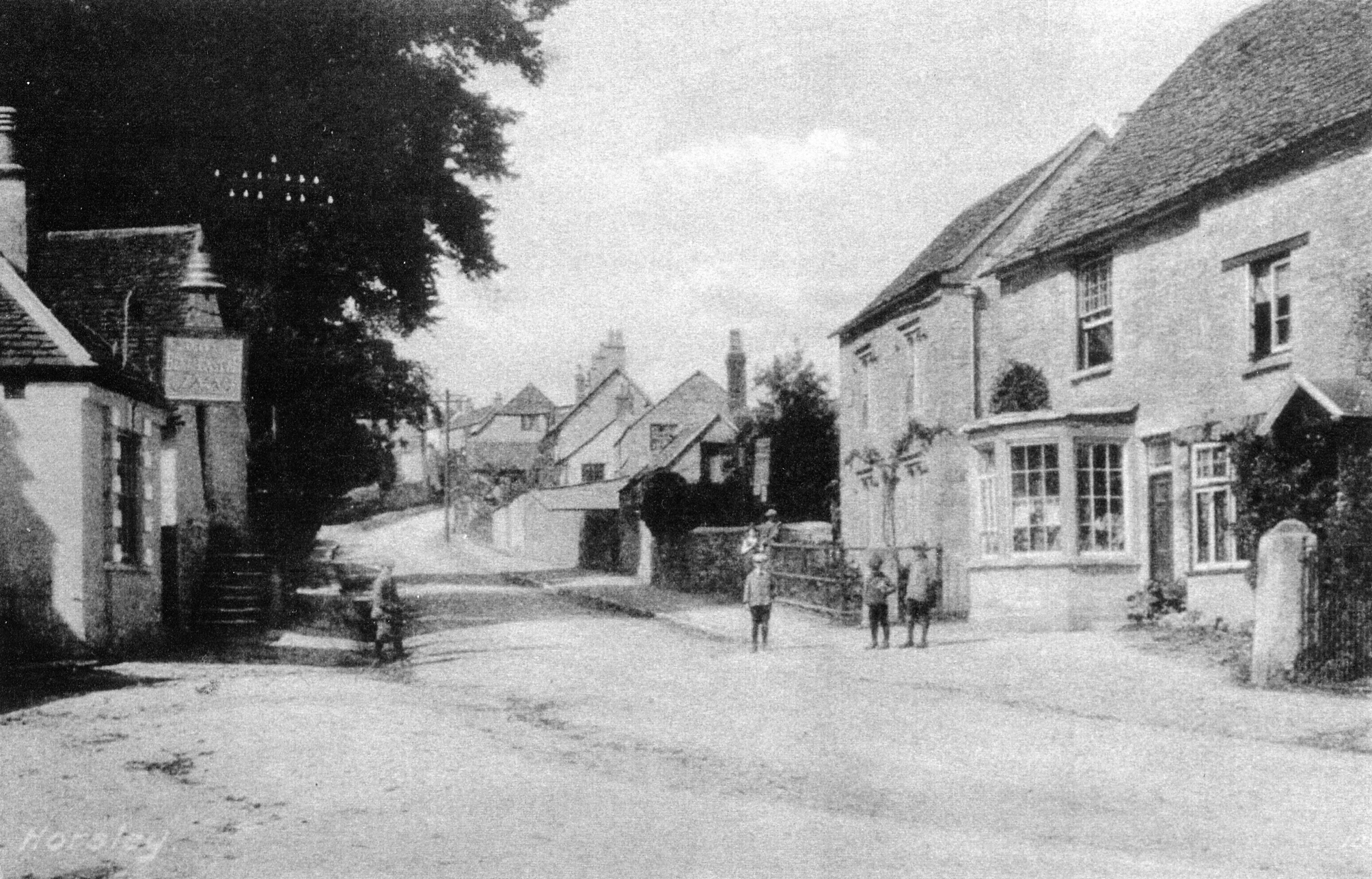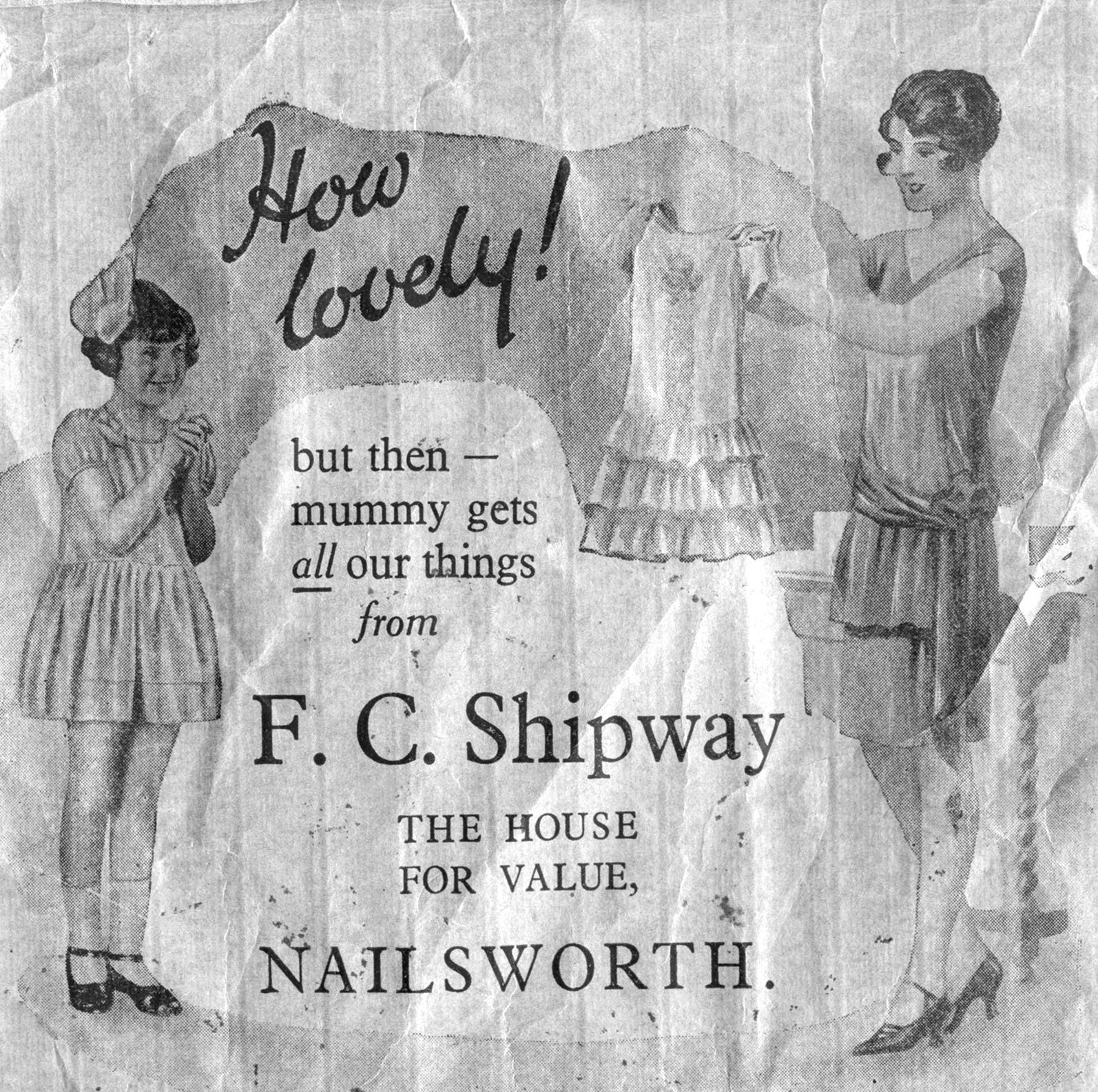An exhibition of Nailsworth memories and photographs will be shown – as part of Nailsworth Festival – from May 17-28 at Three Storeys, Old Bristol Rd, Nailsworth GL6 0JE, entry free, Tues-Fri, 8.30am-4pm; Sat, 10am-4pm; Sun, 10am-3pm.
Katie Jarvis introduces the event here:

I guess it started with a photograph. A beautiful photograph unmistakeably of Horsley village. To the right of the street stand three children, stock-still as if commanded so by the man with the camera (and, yes, almost certainly a man). Children who – as soon as the camera shutter closes – will shrug off their immobility and chase after a ball; or shout cheekily at their immortaliser; or, perhaps, run off to scrog apples round the brimming orchards of Downend.
But there are clues that the familiarity felt by a 21st century viewer is a bluff. Clues that these are children no more: for each wears a formal cap; and the street they stand on is strangely empty: not a car in sight…
Or maybe it started before that: with my grandmother, who would sing me old songs – Red stockings, blue garters, my shoes are tied with silver. Who would tell me how, as a little girl, she saw crowds cheering young soldiers marching off to war. The First World War, that is.
These images and stories were not so much windows into the past, as chinks of sepia light. And they fascinated me – because the alien world they evoked was one that had only just disappeared round the corner.
Since then, I’ve been trying to capture memories before they vanish. I’ve spoken to local residents – some with us no longer – about ‘Bobby’ Bourton, the local copper, who knew everyone by name: game for a pursuit when he saw a schoolboy pinching one of those sour Downend apples. ‘He dived and started chasing me,’ remembered Herby Creed (born 1917), who sped across the fields before walking casually back up the same way. ‘Did you see any lads running down the field?’ I said, ‘No, I’ve just come up!’
Muriel Newman (born 1916), who lived in Newmarket, and loved the well-water that served their cottage. ‘We’d lift the board on the bucket mum used to wind, and then we did sit on the step in the evenings and have a cup of it. That was all you wanted’.
Wilfred Hartley (born 1922) loved visiting his grandparents each Sunday at Egypt Mill, but avoided having to use the toilets at all costs. ‘They were in a hut used by all the people who lived there, and they were straight over the water.’
Nailsworth had Harts, the exclusive ladies’ shop; Freshwaters, the grocer’s in Market Street. Harold Fletcher had a fish shop where William’s is now: ‘He had no freezers or fridges. The fish used to lie on a steel tray with fresh water running over it from a pipe…’

Or the man at Harley Wood, convinced a neighbour was pinching his outside store of firewood. So he drilled a hole in a couple of logs and filled them with gunpowder. The next day, a neighbour’s grate blew out.
These stories – and there are many – are wonderful; they’re also more than the sum of their parts. For their half-hidden whispers tell of empty roads that children could safely play in; of families content with the simplest drink of well-water; of police officers who knew every apple was of value; of precious firewood essential for heating and cooking.
And, perhaps, they also tell us a little of how the solutions we look for in an unsustainable world were once a way of life.
